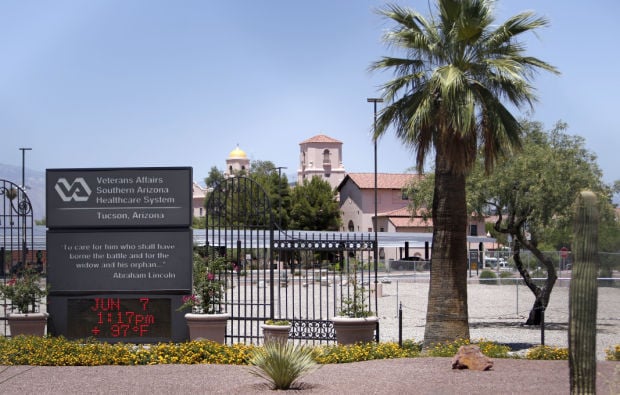The Southern Arizona VA Health Care System got three of five stars on an internal quality rating scale used by the Department of Veterans Affairs, says a recent VA Office of the Inspector General report on the Tucson facility.
The rating was based on the last three months of 2013. Tucson VA officials would not release quality data for most recent year-long period, which ended March 2014. But the limited 2013 figures suggest the facility outperforms the Phoenix VA Health Care System, which is at the center of the scandal over dishonest scheduling practices and dangerously long wait times for veterans needing care.
The Wall Street Journal reported last week that the Phoenix VA had the lowest possible rating — one of five stars — for the year ended in March, according to a private VA database that tracks procedure outcomes and rates VA hospitals.
The database showed a wide range of outcomes among VA facilities, the Journal reported. The Phoenix VA had higher rates of mortality and deadly infections for patients, including a sepsis bloodstream infection rate that was more than 11 times higher than top-performing VA hospitals, the article said.
The database provided to the Journal, called Strategic Analytics for Improvement and Learning, or SAIL, is for internal VA use and not intended for public consumption, VA officials say.
Southern Arizona VA Health Care System public affairs officer Steven Sample said Thursday the Tucson VA would not release its complete SAIL data. But he shared some details on wait times.
Although wait times in Tucson vary from summer to winter, Sample said in April new patients experienced average wait times of:
- 15 days for a primary care appointment.
- 22 days for a specialty care appointment.
- 17 days for mental health care appointments.
In May, established patients had average wait times of 1.3 days for primary care, 1.4 days for specialty care and 2.3 days for mental health appointments, he said.
Last week a report from the VA Office of the Inspector General confirmed allegations of widespread problems at VA hospitals and concluded that “inappropriate scheduling practices are a systemic problem nationwide.” The report said 1,700 patients at the Phoenix VA hospital were put on unofficial waiting lists and veterans there waited an average of 115 days for their first primary care appointment. The facility had reported its average wait time as 24 days, which could have led to bonuses for Phoenix VA leadership, the report said.
At least 35 patients died while waiting for care at the Phoenix VA hospital, but inspectors are trying to determine whether the delays contributed to veterans’ deaths.
LOCAL RESULTS
Partial SAIL data for the Tucson VA was included in a federal inspection report released in April. The U.S. VA’s Office of the Inspector General conducted its regular inspection of the Tucson VA in February, leading to the report, local officials said.
The report showed the hospital scored in the top quintile among VA facilities for the following SAIL measures: patient satisfaction, primary care wait time, efficiency, specialty care wait time and mental health status. But it scored in the bottom fifth among all VA hospitals in mortality rates for congestive heart failure patients and pneumonia patients, RN turnover and performance measures for inpatient and outpatient care, which were not detailed in the report.
Overall, the Southern Arizona VA Health Care System ranks No. 1, based on its recent SAIL quality and efficiency performance, in the VA’s Southwest network area, which includes seven VA systems in Arizona, New Mexico and Texas, Sample said.
LOCAL EXPERIENCES
Ken Dowse, senior vice commander for the American Legion in Tucson, said he visits regularly with patients at the Tucson VA.
“I’ve heard nothing but good things,” he said. “Most of the people I’ve ever talked to here in Tucson think the VA down here is out of this world.”
Vietnam veteran Jerry Yates, 69, says his high blood pressure and inconsistent iron counts have been handled effectively by local VA doctors, although he says he has had to wait up to five months for non-urgent appointments. “Sometimes it takes a while to get in,” he said. “But they’re nice people out there.”
John Walker, 69, who was in the Army during the 1960s, said he first went to the VA when the solar company he worked for went out of business and he found himself uninsured.
“I am really happy with the one here in town,” said Walker, who’s been treated for melanoma.“You’ve got a little waiting period, but it’s not very long. They’ve been taking good care of me.”





